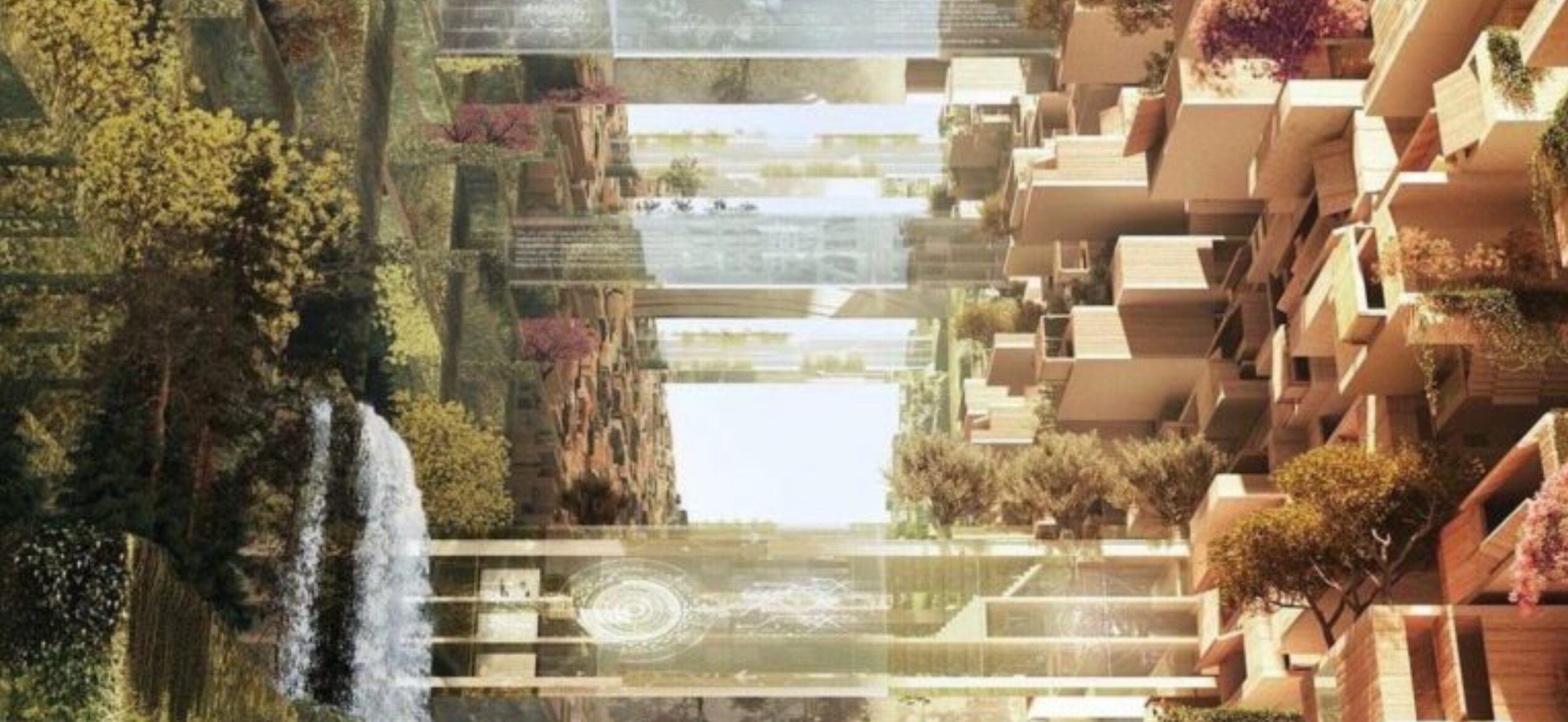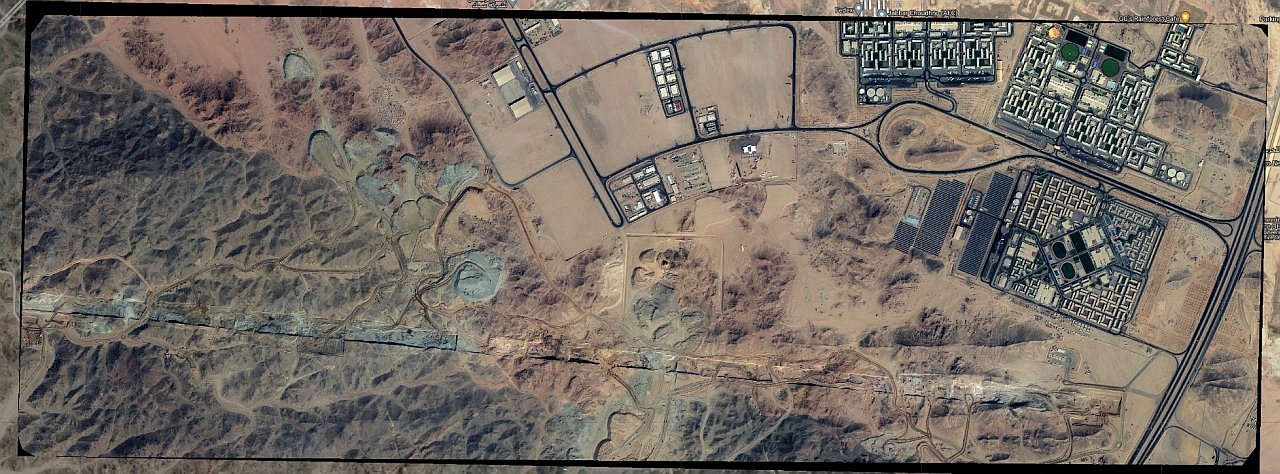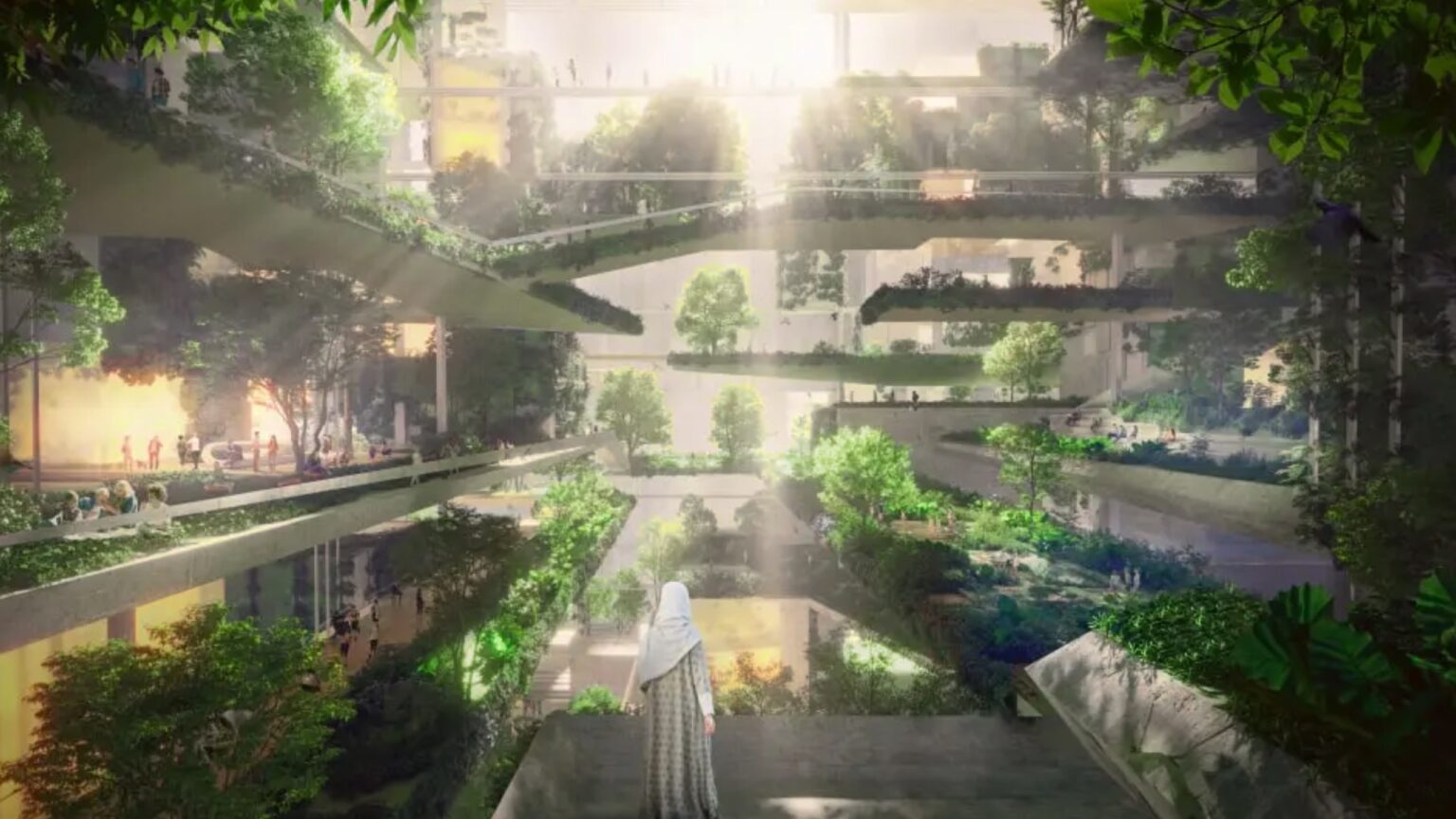The Line is a $725 billion futuristic self-contained city which will house nine million residents – about three times Namibia’s population. The Line is perhaps one of the most excitingly outrageous architectural ideas to be born through experiments by an Arab capital.
Funded by the Saudi Arabian Investment Fund, the rectangular prism-like volume is planned to be 500 metres tall, 200 metres wide and 170 kilometers long.
The idea will create a benchmark for a new city design, according to Tarek Qaddumi, who is leading the city’s urban planning team.
He said that the linear layout, with its footprint covering only 34 square kilometers will cure the many issues faced by modern cities, like traffic, air pollution and urban sprawl. Qaddumi explains the vision:
“Neom has the opportunity to build a greenfield city that will not have such problems to start with. The Line will have no cars, no pollution and will provide access to people and services in ways previously unimaginable.”
Recent satellite footage released by SOAR Earth shows that construction has now started in Neom, an area in Saudi Arabia’s north-western Tabuk province.
The Line: A utopian design in metaverse grade

What makes The Line unique is that it is designed in a utopian way, almost in the same manner as metaverse cities.
In the metaverse, cities are being built that give what founders call an “immersive experience resembling a real life city but as part of augmented reality.”
They are physical buildings with virtual counterparts, or “digital twins”. The Line’s aesthetics appear to provide a metaverse feel to an otherwise real life object.
Neom authorities said Wednesday that “we’ve brought The Line to life in our fully immersive exhibition.” The free exhibition started on Nov. 6 in Riyadh.
Visitors “will experience detailed designs, architectural models, and informative films explaining the project in all its glory,” authorities claim.
At The Line, all services are supposed to be within a walkable distance. It functions on zero emissions and it is an exclusive society where about $55,000 can buy one space.
Saudi Arabia’s sci-fi mega-city will primarily run on artificial intelligence, unlike conventional cities which are time bound and where services have to be accessed within certain time spaces.
City of vanity, critics say
Top architects have asked questions around the practicality of the idea, saying it borders on vanity more than functionality at this point.
Brent Toderian, a top architect who has judged multiple competitions, argued in a tweet that The Line city may create a state of disorder.
“Articles are stressing its linear-ness but I think the bigger challenge is its staggering vertical-ness. It aims to erase roads for cars, but it is also erasing streets for people. How will it create coherent civic spaces? Toderian, queried, adding:
“I appreciate the clear focus on transit (linear and vertical) but it is still a massive object in the desert, and feels designed for attention rather than building.”
According to the project’s Twitter page, the city is modelled around the efficiencies found in Seoul, South Korea. However, it uses only 6% of the total space.
The city is conditioned to bring optimum climatic conditions at all times, cushioning people from adverse weather conditions.
An explainer in the Arabian Business says The Line will be ventilated in a way that enhances the comfort of those living in the city. This is premised on a concept known as zero-gravity living, a new and untested idea in urban design.

Under zero gravity living, cities are built vertically while giving people the possibility of moving seamlessly in three dimensions (up, down, or across) to access them, according to experts.
Preserving land
The area where the city The Line is being built is a desolate region with little vegetation and harsh environmental conditions. It is located near the equator, making it hot and arid, and it is prone to frequent sandstorms.
The philosophy behind the idea, at least according to the team working on it, is that the city needs to do very little to obstruct the already existing environment. They claim that 95% of Neom’s land will be preserved after construction.
/MetaNews.









 and then
and then